People have been coloring their hair with natural dyes for centuries. In the late 1800s, colored contacts were invented, and later — in the 1960s — became available for people who wanted to change their eye color as well. With all the box hair colors and the online availability of colored contact lenses today, people have endless possibilities for changing their hair and eye color as often as they want.
However, some hair and eye colors are naturally unique. Consequently, in some of these combinations, the colors can be stunning. Read on to discover the 10 rarest eye and hair color combinations in the world.
What Determines Hair and Eye Color?

The amount of melanin your body produces determines the color of your hair.
©Kasiam/ via Getty Images
Melanin is a substance that produces dark brown or black pigment in your skin, eyes, and hair. The amount of melanin in your body determines your hair, eyes, and skin color. But what determines the amount of melanin you have? That depends a lot on your genetic background.
In addition to your genetic background, the measure of melanin you produce is also affected by how much sun your ancestral population was once exposed to. Melanocytes, found in hair, pupils, irises, the hypodermis, specific areas of your brain and adrenal glands, and your inner ear, produce this melanin.
Which Hair and Eye Combinations Are the Rarest?
Both hair and eye color are determined by a few factors. For one, the amount of melanin produced in your melanocytes is a factor. Also, several genes influence how much melanin is stored in the iris of the eye and in the hair. Not only that, but the combination of genes from both parents can produce different colors.
For example, though brown eyes are determined by dominant genes, two brown-eyed parents still have a chance — about 25% — of producing a blue-eyed child. Furthermore, both hair and eye color can change slightly over time due to stress, injury, illness, or simply changes in hormone levels.
While the combination of genes within a person’s heredity plays a huge role in determining what color combination of hair and eyes they have, there are some colors that are more common than others and some that are considered less common. In this article, we’ll delve into which color combinations are the rarest in the world.
10. Blonde Hair and Blue Eyes

There is a rumor that the World Health Organization conducted research concluding that blonde hair is going to be extinct in 200 years. However, the WHO has proven the rumor to be false.
©dlp photo, CC BY 2.0, via Wikimedia Commons – Original / License
People who are born with blonde hair and blue eyes most likely have North-Eastern Slavic or European heritage. There is a 0.17% probability of being born with this particular hair and eye color combination. For many people born with this combination, however, their hair ends up getting darker by the time they reach the age of ten.
Finland’s population has a concentration of 80% blonde-haired people compared to 2% worldwide. The country also has 89% of its population with blue eyes. Consequently, while this color combination may be rare throughout the rest of the world, it’s actually quite common in Finland. Other countries with large concentrations of blue-eyed blondes include Sweden, Norway, Estonia, Iceland, and Denmark.
There is about 16% of the world’s population with blonde hair combined with blue eyes. However, the statistics aren’t always cut and dried when it comes to blonde hair. Since whether or not a person’s hair is considered blonde is more subjective than other colors, the statistics can be a little skewed.
9. Blonde Hair and Brown Eyes

People with brown eyes have significant amounts of melanin, but blonde people do not, which is why the combination is rare.
©Hero Images/iStock via Getty Images
Blonde hair may be the most difficult color to definitively identify. This may be because there are so many variations of the color. The most common shade is light blonde — a light ash color with a honey or a golden hue. Surprisingly, dark blonde hair isn’t as common as light blonde hair. This shade of blonde is typically dark ash with a copper or a brown hue. The rarest kind of blonde hair is strawberry blonde — typically copper or light red with a strawberry or a golden hue.
Although only 0.1% of people in the United States have naturally blonde hair and brown eyes, that percentage is higher for those in Europe. At least 4% to 5% of Europeans are born with this color combination. Some statistics report that 0.1% – 2% of people worldwide share this eye-hair color combo. However, with the blonde hair color being more subjective than others, it’s difficult to determine the accuracy of the data.
What Makes This Color Combination Rare?
People produce a certain amount of melanin in their melanocytes. Those with brown eyes have significant amounts of melanin. Specifically, the amount of eumelanin is larger in brown-eyed people. Blonde hair, however, contains very little eumelanin. Therefore, the chances of someone with a lot of eumelanin — brown-eyed people — are very unlikely to have blonde hair.
8. Blonde Hair and Green Eyes
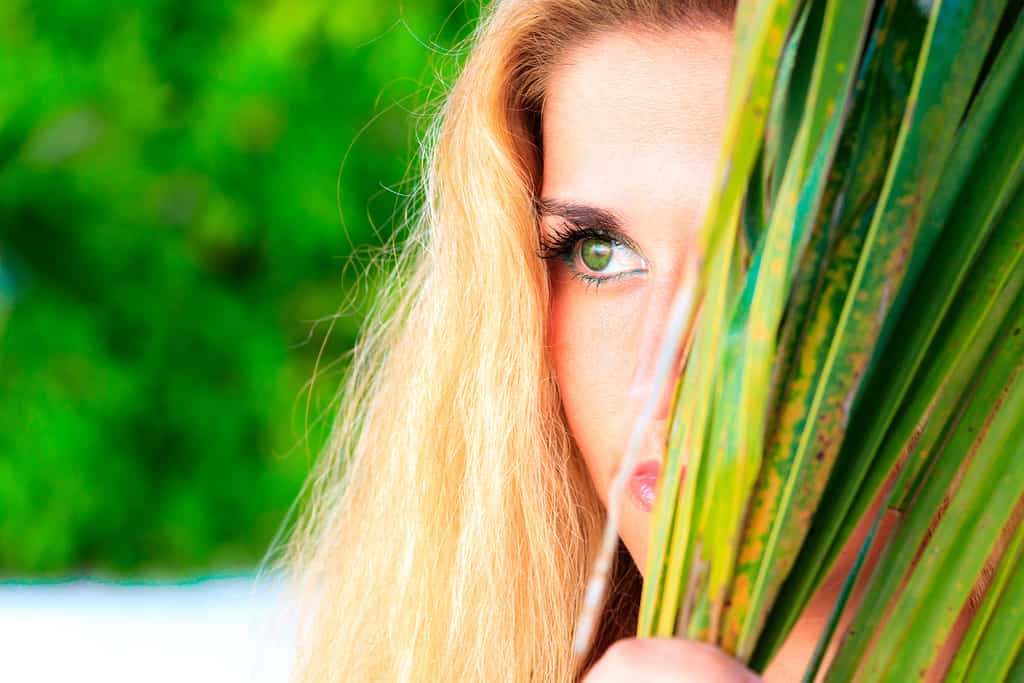
Green eyes are not actually green but are actually blue with a yellow wash over them.
©Naked King/iStock via Getty Images
Green eyes, which are one of the rarest colors in the world, actually have no iris color. Due to the lack of melanin, people with green eyes tend to be sensitive to light. People who are born with both green eyes and blonde hair have only a small amount of eumelanin in their bodies.
While most people have a 0.08% chance of being born with this combination, there is a little village in China that actually has over 66% of its population with this combo. Liqian is a village in which over two-thirds of its people are born as green-eyed blondes. Some hypothesize that these villagers are descendants of ancient Roman legionnaires who mysteriously vanished after a battle with the Han Chinese about 2,000 years ago.
7. Red Hair and Brown Eyes
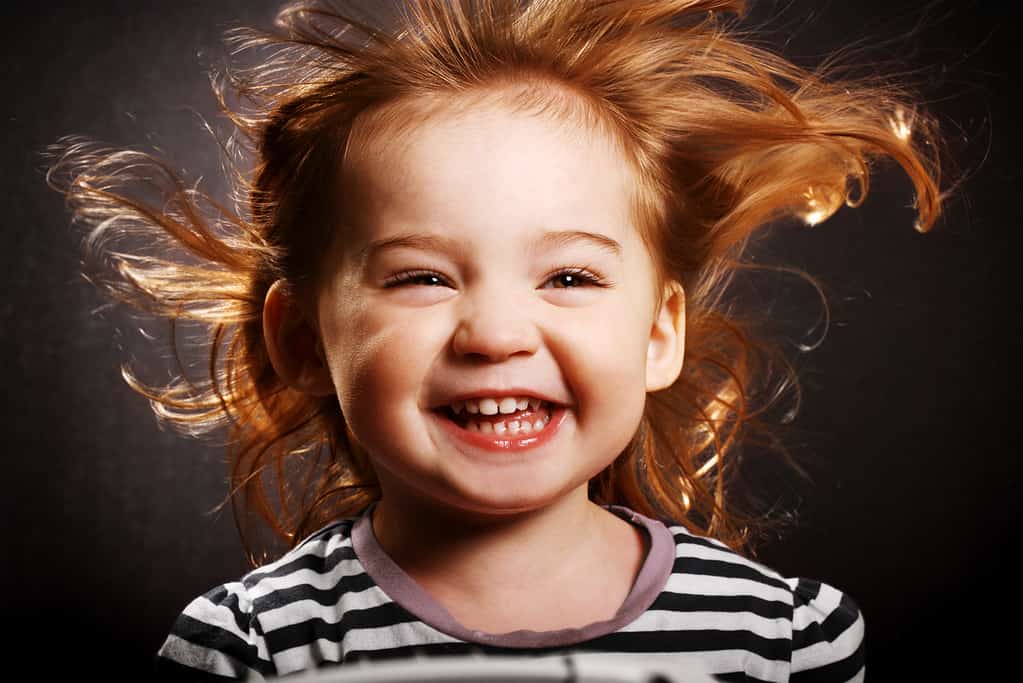
In Ireland, 10% of the population has red hair.
©katielittle25/iStock via Getty Images
Despite brown eyes being the most common color in the world, the combination of brown eyes and red hair is much less common. Similar to the biological paradox of blonde hair and brown eyes, the contradicting levels of melanin make this combination rare as well.
Brown eyes have significant levels of eumelanin, but red hair requires equal amounts of eumelanin and pheomelanin. This particular combination tends to occur mostly in Germany, Ireland, and northern Europe. Nevertheless, the color combination is gaining prevalence in Africa and other parts of Europe as populations continue to mix.
6. Brown Hair and Hazel Eyes
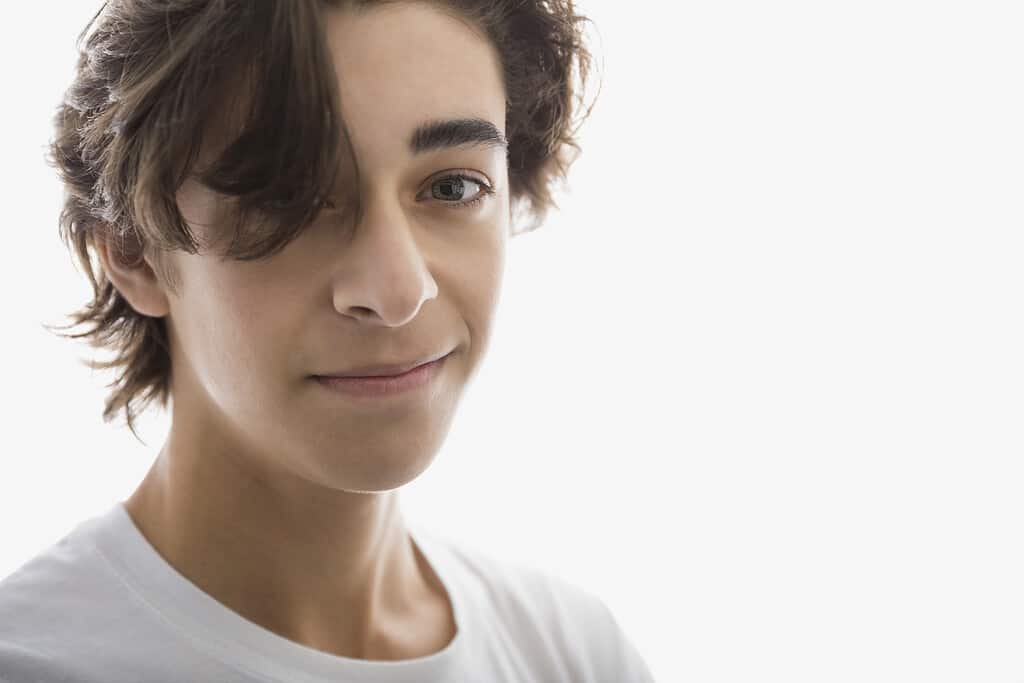
Hazel eyes — usually a combination of brown, gold, and green — have a different color around the pupil than around the outer rim.
©Hero Images/iStock via Getty Images
Brown hair is the second most common hair color in the world. In fact, this color accounts for 11% of the population. In addition, about 5% of people around the globe are born with hazel eyes. The two colors in combination are, therefore, rare.
In the United States, an estimated 18% of people have hazel eyes, but this is more common in Brazil, Spain, North Africa, and the Middle East. Just as there are a myriad of brunette hair color shades, hazel eyes can have flecks of brown, gold, green, and even white and blue. Many people group hazel eyes with amber ones.
5. Blonde Hair and Hazel Eyes

People sometimes use the words hazel and amber interchangeably when describing eye color.
©Dizzy/iStock via Getty Images
Hazel, or amber, eyes have a medium amount of melanin in them, but blonde hair has hardly any. Therefore, the combination of the two colors seems contradictory. It would make sense that someone who has only a small amount of melanin to produce blonde hair would only have enough to produce blue or green eyes as well. Yet, there are some people who have hazel eyes instead.
Only 5% of the population has hazel eyes. When you combine that with a worldwide population of 2% blonde-haired people, you can see how uncommon the combination would be.
4. Black Hair and Green Eyes

Black hair accounts for 75 to 85% of the world’s population. However, the combination of this hair color with green eyes is actually quite rare.
©Jani Bryson/iStock via Getty Images
The combination of black hair and green eyes is pretty rare. Even so, Ireland, Scotland, and Germany are countries in which you may find it a little more common. Some North African and Mediterranean countries have more people with this unique color combination as well.
3. Black Hair and Blue Eyes

About
8% to 10%of the world’s population have blue eyes. When seen in combination with eumelanin-rich black hair, this percentage is lower.
©AlexeyVladimir/iStock via Getty Images
It takes a large amount of eumelanin to produce the rich black hair seen in up to 85% of our population. Conversely, the 8% to 10% of blue eyes in the world can be traced to a mutation from between 6,000 and 10,000 years ago that caused the iris’s capability of making melanin to be turned off. Therefore, the paradox of having virtually no melanin in the eyes in contrast with significant amounts in the hair makes this special color combination a rare treat.
2. Red Hair and Green Eyes
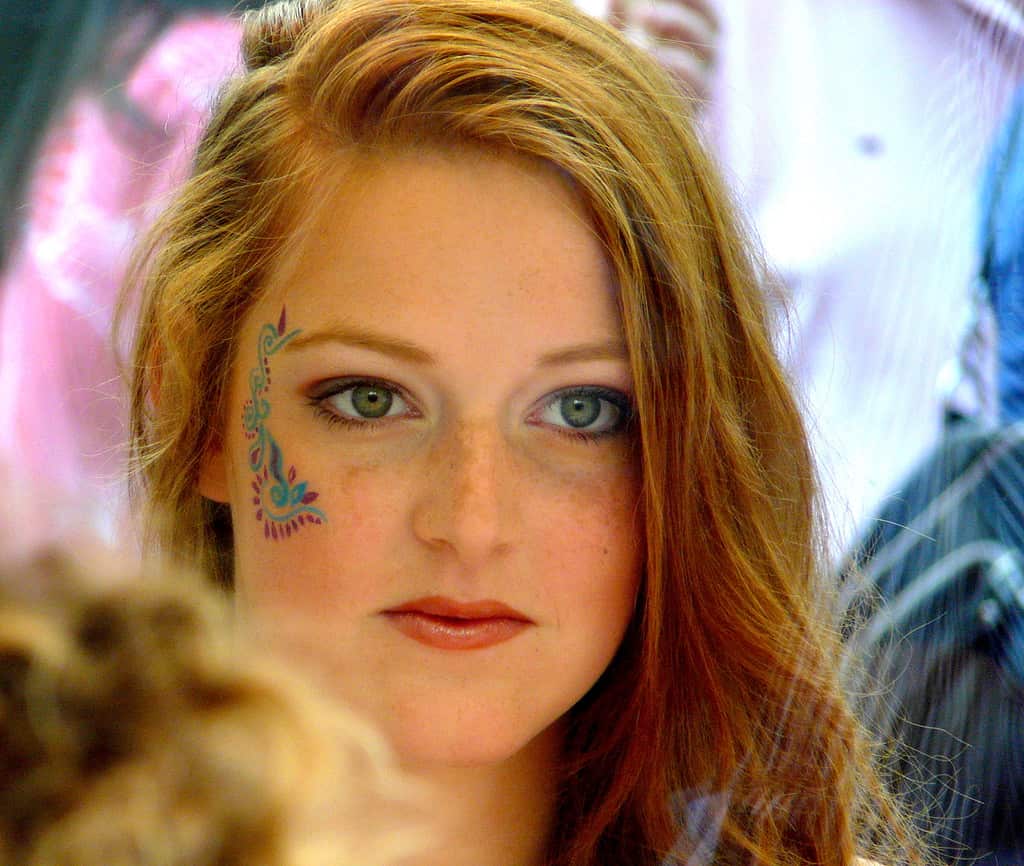
People with red hair and green eyes, though rare worldwide, are more common in Scotland and Ireland.
There are more red-headed people in Ireland, Scotland, and Great Britain than in other areas of the world. Those have a higher percentage of green-eyed births as well. In fact, 29% of Scotland’s population has green eyes.
Both red hair and green eyes require pheomelanin, the yellow-red pigment that also can determine amber eyes or freckles. It is unusual for a child to be born with green eyes since almost all infants are born with either blue or brown eyes. Melanocytes begin to secrete melanin after birth as they come into contact with sunlight. It takes about one year for the melanocytes to produce the pigments.
1. Red Hair and Blue Eyes

Only about 13 million people in the world have red hair and blue eyes.
©© Stuart Monk/iStock via Getty Images
Being born with both red hair and blue eyes is an extremely rare occurrence anywhere in the world. This event is often referred to as a clash of recessive genes. In fact, it almost always occurs only if both parents have the gene.
Since women with this gene mutation have a higher melanocortin one receptor — MC1R — they are more likely than men to be born with the red-hair-blue-eyes color combination. Interestingly enough, if both parents carry the recessive gene and also have red hair, their child will be 100% certain to have red hair.
People with Albinism
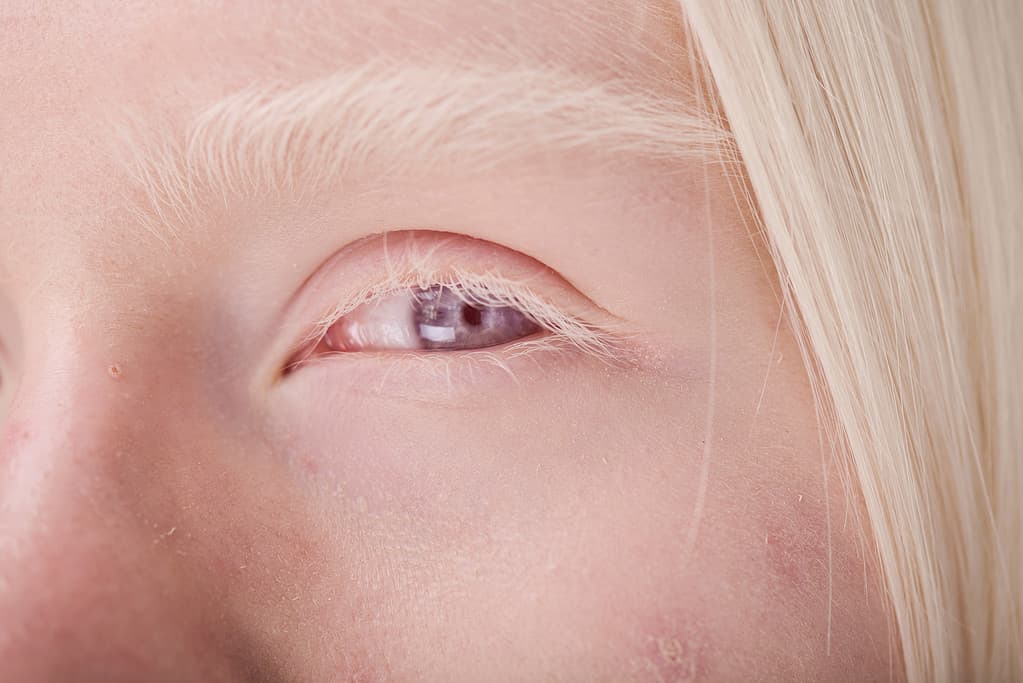
Depending on the type of albinism someone has, their hair, skin, or eyes — or a combination — may be affected.
©AnnaStills/iStock via Getty Images
People with albinism have a cluster of genetic conditions that influence how much pigment their hair, eyes, and skin will produce. Albinism can cause slight differences in color, or it can be more severe. However, not all people with the condition have all three features affected.
For instance, oculocutaneous albinism (OCA) affects melanin production in all three features in those afflicted with the condition, whereas ocular albinism — less common than OCA — only affects the eyes. In addition, some people with the disease have severely impaired vision, while others may have little or no impairment. They usually experience light sensitivity, and most people with albinism are prone to getting sun damage —and even skin cancer — quite easily.
Other Rare Eye Colors
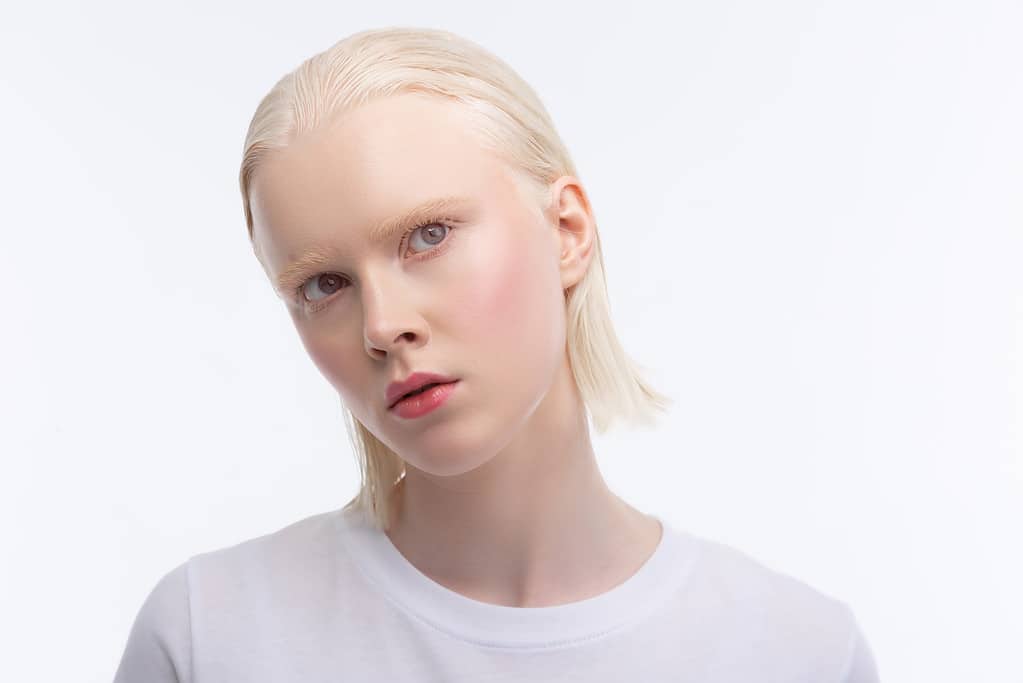
Less than 1% of the global population has gray eyes.
©yacobchuk/iStock via Getty Images
There are eye colors that are so rare, that not much research has been done on them. People have historically categorized gray eyes, for example, with blue, though they truly are a unique color. Pink and red eyes can occur in people with albinism. The pink and red colors aren’t caused by pigments, though. The blood vessels at the back of the eyes, which are visible to others, create the color.
Violet eyes can also result from people with albinism. Sometimes, people with blue eyes have a hue that can look violet in some lights. The late actress, Elizabeth Taylor, had violet eyes, but other cases of this color are usually the result of albinism, Horner’s syndrome, pigment dispersion syndrome, Pigmentary glaucoma, Waardenburg syndrome, or Fuchs’ heterochromic uveitis.
Heterochromia

Heterochromia that isn’t caused by illness or any other underlying medical condition won’t affect a person’s vision.
©Elena Kurkutova/iStock via Getty Images
Heterochromia is the condition in which a person is born with two different-colored eyes. Some people have a condition called piebaldism, in which pigment-producing cells are lacking in patches of their hair, skin, or one eye. Eye injuries, surgeries, illnesses, or medication can also cause this condition.
Why Do People Get Gray Hair?
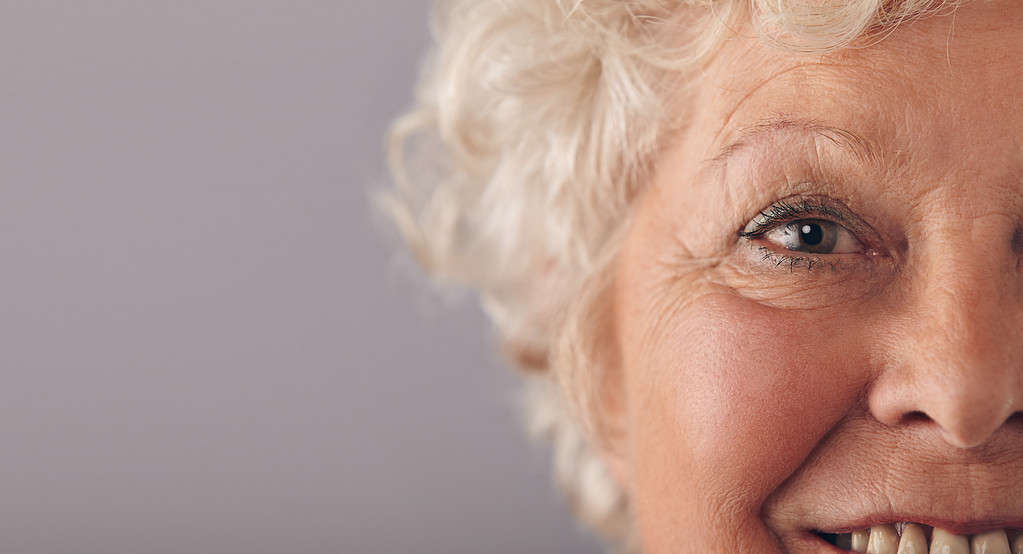
The graying of your hair is a natural and harmless byproduct of aging.
©Ammentorp Photography/iStock via Getty Images
Just like the rest of our bodies, hair color can change as we age. The pigment cells that your in our hair follicles will eventually die, and there won’t be much melanin. This makes the hair more transparent, such as silver, white, or gray.
Despite graying of your hair being a natural process, there are some illnesses that can cause your hair to turn gray prematurely. A vitamin B12 deficiency is one possible cause of premature graying. Other causes are neurofibromatosis, tuberous sclerosis, thyroid disease, vitiligo, and alopecia areata. Nowadays, though, many people are opting to color their hair gray or silver, making it more trendy.
Summary Table of the 10 Rarest Hair and Eye Color Combinations in the World
| Rank | Hair Color | Eye Color |
|---|---|---|
| 1. | Red | Blue |
| 2. | Red | Green |
| 3. | Black | Blue |
| 4. | Black | Green |
| 5. | Blonde | Hazel |
| 6. | Brown | Hazel |
| 7. | Red | Brown |
| 8. | Blonde | Green |
| 9. | Blonde | Brown |
| 10. | Blonde | Blue |
The photo featured at the top of this post is © Jun/iStock via Getty Images
Thank you for reading! Have some feedback for us? Contact the AZ Animals editorial team.







